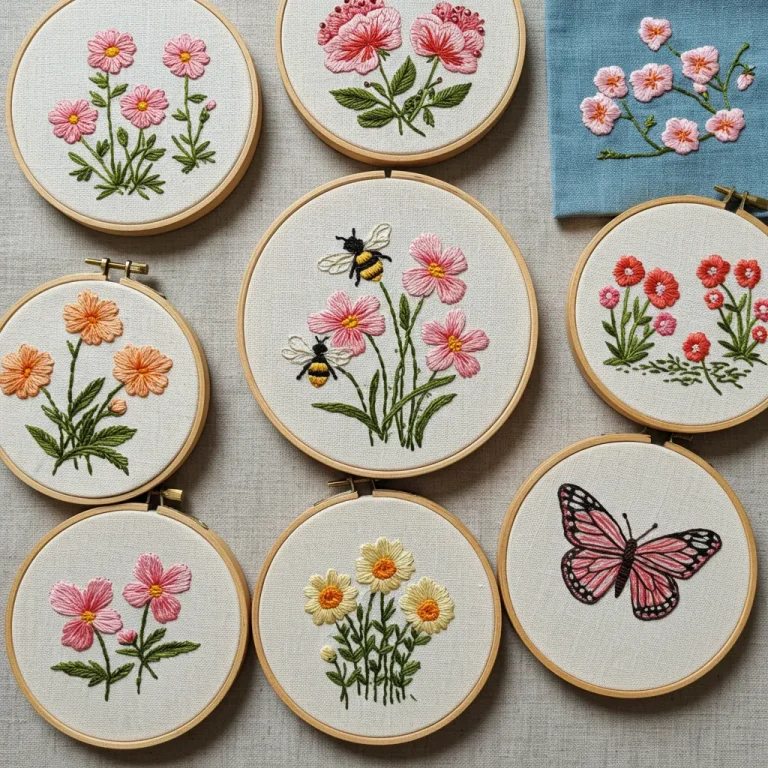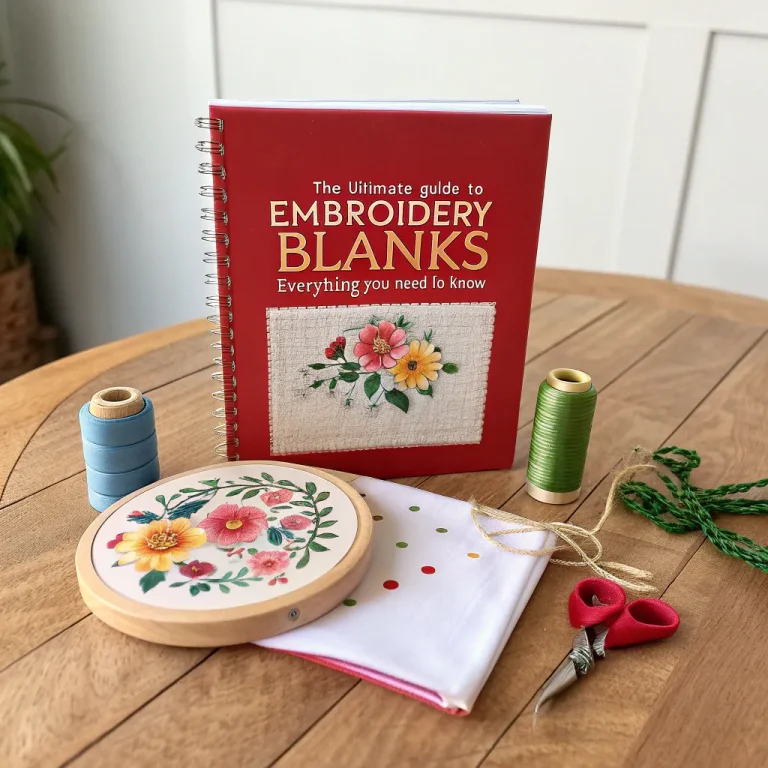Embroidery is a timeless art form that has been around for centuries, transforming plain fabrics into stunning pieces of art with intricate stitching. Whether you’re a beginner or an experienced embroiderer, choosing the right embroidery fabric is crucial to the success of your project. In this guide, we’ll explore the different types of embroidery fabrics, how to select the best one for your needs, and tips to enhance your stitching experience.
What is Embroidery Fabric?
Embroidery fabric refers to the textile used as a base for stitching designs, patterns, or images. It serves as the canvas for your embroidery work, and the choice of fabric can significantly impact the outcome of your design. From lightweight cotton to luxurious silks, the variety of fabrics available offers endless possibilities for every type of embroidery project.
Types of Embroidery Fabrics
- Cotton Fabric
One of the most popular fabrics for embroidery, cotton is soft, easy to work with, and widely available. It is great for beginners because it’s easy to hoop, and the threads hold well on the material. Cotton fabrics like muslin, quilting cotton, or even linen blends are excellent choices for a wide variety of embroidery designs, from florals to geometric patterns. - Linen Fabric
Linen is another classic fabric that has been used in embroidery for generations. Known for its durability and natural texture, linen adds a rustic touch to your work. It’s perfect for creating vintage-inspired or bohemian designs. Linen can be a bit stiffer than cotton, but it holds embroidery stitches beautifully. - Aida Cloth
Aida cloth is a type of cotton fabric with a grid-like weave, making it especially popular for cross-stitch embroidery. The evenly spaced holes make it easy to count and stitch precise designs, which is why Aida is the fabric of choice for many cross-stitch enthusiasts. - Silk Fabric
For a touch of luxury, silk embroidery fabric is a go-to for many advanced embroiderers. It’s smooth, shiny, and takes stitches beautifully. However, working with silk requires a bit of finesse as it can be delicate and slippery. Silk fabric is commonly used in high-end, detailed embroidery designs, such as those for bridal wear or couture fashion. - Tulle and Organza
If you’re looking to create ethereal, delicate designs, tulle and organza are excellent choices. These lightweight, semi-sheer fabrics are often used for decorative embroidery in bridal and evening wear. They can be layered over other fabrics to add a dreamy texture to your embroidery project. - Denim and Canvas
For a more modern and durable look, denim and canvas fabrics are perfect for embroidery. These thicker fabrics work well with bold designs and are often used for custom apparel like jackets, bags, and hats. The sturdy nature of denim ensures that embroidery threads stay in place, even after frequent washing.
How to Choose the Right Embroidery Fabric
Selecting the right embroidery fabric depends on several factors:
- Type of Design:
The complexity of your design will influence your fabric choice. For detailed, fine lines, a smooth fabric like silk or cotton will work best. For larger, bolder designs, thicker fabrics like canvas or denim will provide the structure you need. - Skill Level:
If you’re a beginner, it’s best to start with an easy-to-handle fabric like cotton or Aida cloth. These fabrics are forgiving and allow you to experiment with various stitches without worrying about fabric tension or thread pulling. - Texture and Finish:
Consider the texture of the fabric and how it complements your design. A rougher fabric like linen can create a rustic, handmade feel, while a smooth fabric like silk offers a more polished, luxurious finish. - Fabric Weight:
Lighter fabrics, such as cotton, are easy to stitch on and are ideal for projects requiring precision. Heavier fabrics like denim or canvas can be more difficult to embroider but are great for bold, statement pieces. - Color:
Choose a fabric color that enhances your design. Lighter fabrics tend to highlight thread colors better, while darker fabrics provide a striking contrast, making the embroidery stand out. Be sure to consider how your thread colors will appear on the fabric.
Tips for Embroidering on Fabric
- Pre-Wash Your Fabric:
Always pre-wash your fabric before starting any embroidery project. This helps remove any sizing, dirt, or oils from the fabric and ensures that it shrinks evenly after stitching. - Use the Right Needle and Thread:
Different fabrics require different types of needles. A larger needle is better for thicker fabrics like denim, while a finer needle is perfect for delicate silks and linens. Similarly, thread thickness should match the fabric type—heavier threads for thicker fabrics, and finer threads for more delicate materials. - Stabilizer Is Key:
Using a stabilizer is important, especially for fabrics with a loose weave, like linen or tulle. Stabilizers keep the fabric from puckering or shifting during embroidery. Choose a tear-away or cut-away stabilizer based on your project’s needs. - Hooping the Fabric:
When preparing your fabric, make sure it is taut in the embroidery hoop. This prevents the fabric from moving while stitching and ensures even tension throughout the design.
Conclusion
Choosing the right embroidery fabric can elevate your stitching projects and turn a simple design into a masterpiece. Whether you prefer the soft feel of cotton, the rustic charm of linen, or the luxury of silk, there’s a perfect fabric out there for every project. By considering factors like fabric weight, texture, and the type of design, you can ensure your embroidery turns out beautifully every time. Happy stitching!
The Story Behind Colorful Crochet Blankets and Their Warmth
The Story Behind the Crochet Hook: From Simple Tool to Essential Crafting Item




